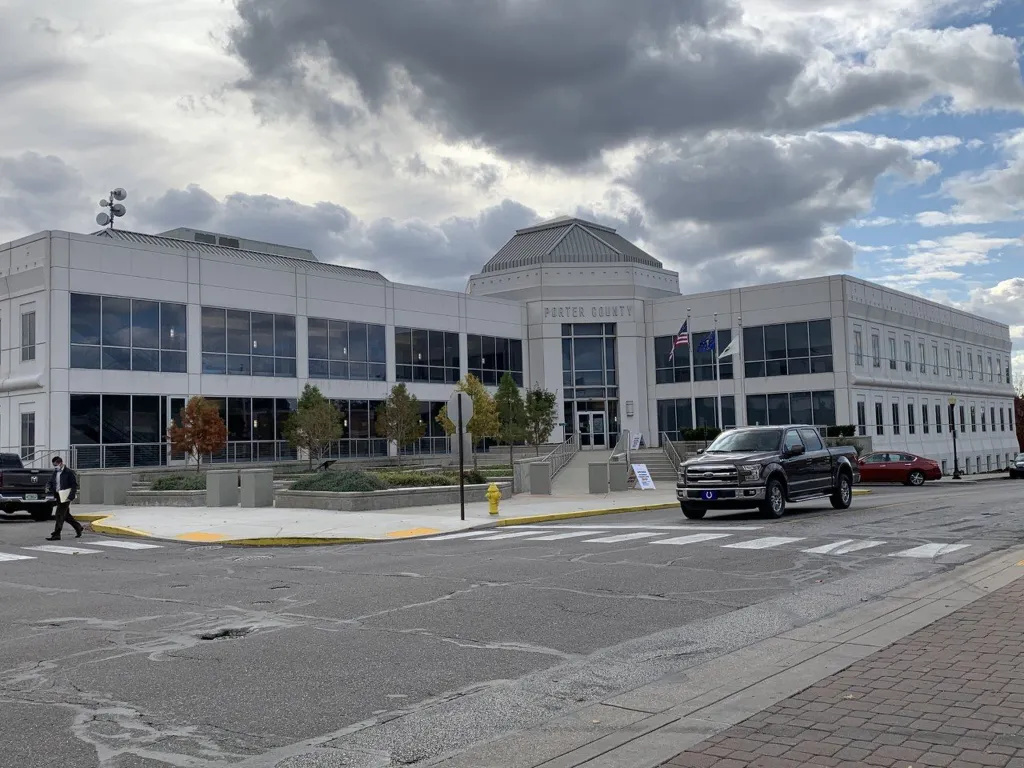
At the end of its second round of 2026 Porter County budget hearings on Sept. 18, the Porter County Council came together in spirit to agree on a strategy for getting through the next two years and also finding the $5 million for four capital projects that require an immediate commitment.
Development & Storm Water Management Director Mike Jabo has been making the rounds of the two branches of county government explaining the projects, their costs, and what would be lost or even need to be repaid if the county doesn’t commit soon. Calumet Trail Phase III requires an investment from the county of $1.28 million to match $4.9 million from a Federal Lands Access Program through the Federal Highway Administration. There are 6.3 miles of trail left to contract out.
Next is the County Road 100 S Safety Project, which involves taking out hills and acquiring the right-of-way on 55 pieces of property. It has to be bid and awarded by this coming spring or $4.98 million in INDOT funds will be forfeited and the county may have to reimburse the state for $1.5 million it’s already spent on the project.
Willowcreek Road Phase I requires a minimal amount of funding to finish environmental work and a county-wide sign replacement project rounds out the list.
“I’m looking for any way to get us to 2028,” said Council Vice President Red Stone, R-1st. “To me, it’s a cash flow issue situation.”
Everyone else, including Deputy Auditor Ryan Kubal, seemed to agree. He said between Local Income Tax (LIT), the Cumulative Capital Development (CCD) Fund, and Porter County Foundation holdings, the county is projected to have about $9.9 million to use on projects over the next two years, with another $1.5 million possible from supplemental LIT.
“If we have the $11 million, then we don’t need to take out the bond or anything else,” said Councilwoman Michelle Harris, R-At-Large.
Councilman Jeremy Rivas, D-2nd, agreed. “We’ll have to spend down some cash balances,” he warned. “Yes, 100%, but I think it keeps us from bonding.”
Stone added that he personally wants to see preservation paving, a strategy recommended by Jabo that employs a variety of technologies and approaches to stretching the lifespan of roads, capital projects, public safety spending requested by Sheriff Jeff Balon, and IT upgrades.
“I would definitely say we have the money to do more of the one-time capital projects, those types of things definitely over the next couple of years,” Kubal said.
Rivas added that it would certainly take a lot of close collaboration between the council, board of commissioners, and auditor’s office, but was doable. “We save the balances for stuff like this, I believe,” he said.
Councilman Mike Brickner, R-At-Large, weighed in with his agreement. “I think we’re on the same page,” he said. “Whatever we want moving forward is less impact on the taxpayer.”
The group agreed it was comfortable calling for a vote of the foundation to continue taking out 5% of the interest earned on the proceeds of the sale of the former county hospital for the next two years.
Historically, the foundation pulls out 3.5% of the interest, but took the maximum allowed by state statute, 5%, in 2025. The percentage vote requires a simple majority of the foundation board, which is made up of the 10 members of the council and board of commissioners.
Harris said she’s fine with that as long as foundation funds are used for one-time projects and not recurring expenses.
“We’re going to commit to the capital projects,” Stone announced at the discussion’s end.
“That’s what he needs to know,” Harris added, referring to Jabo, who sat waiting for a conclusive answer.
In other business, Porter County Health Department Administrator Matthew Paul told the council the Health Department would soon begin posting health department restaurant inspection reports on its website.
“I’ve been having an ongoing FOIA (Freedom of Information Act) request for our restaurant inspections,” he said. “Those of you who are on social media have probably seen them. Someone has been requesting them and posting them, so we are planning to start posting those ourselves.”
Stone said he understands the desire of people to ensure restaurants are safe, but feels the spotlight this individual is putting on the reports can be disingenuous. “Dealing with a business myself and OSHA comes out, they’re going to get you for something.”
“It just kind of sets a bad tone for our restaurants and I feel bad for them,” he added. “They’re struggling with employees. They’re struggling with food costs and they almost have to be commodities traders to make the food nowadays.”
Councilman Greg Simms, D-3rd, said he’s shadowed the county’s restaurant inspectors to see what goes into an inspection. “The professionalism was impeccable,” he said. “I was impressed. He added, without naming them, that he would gladly eat at any of the restaurants he saw inspected.
Shelley Jones is a freelance reporter for the Post-Tribune.



